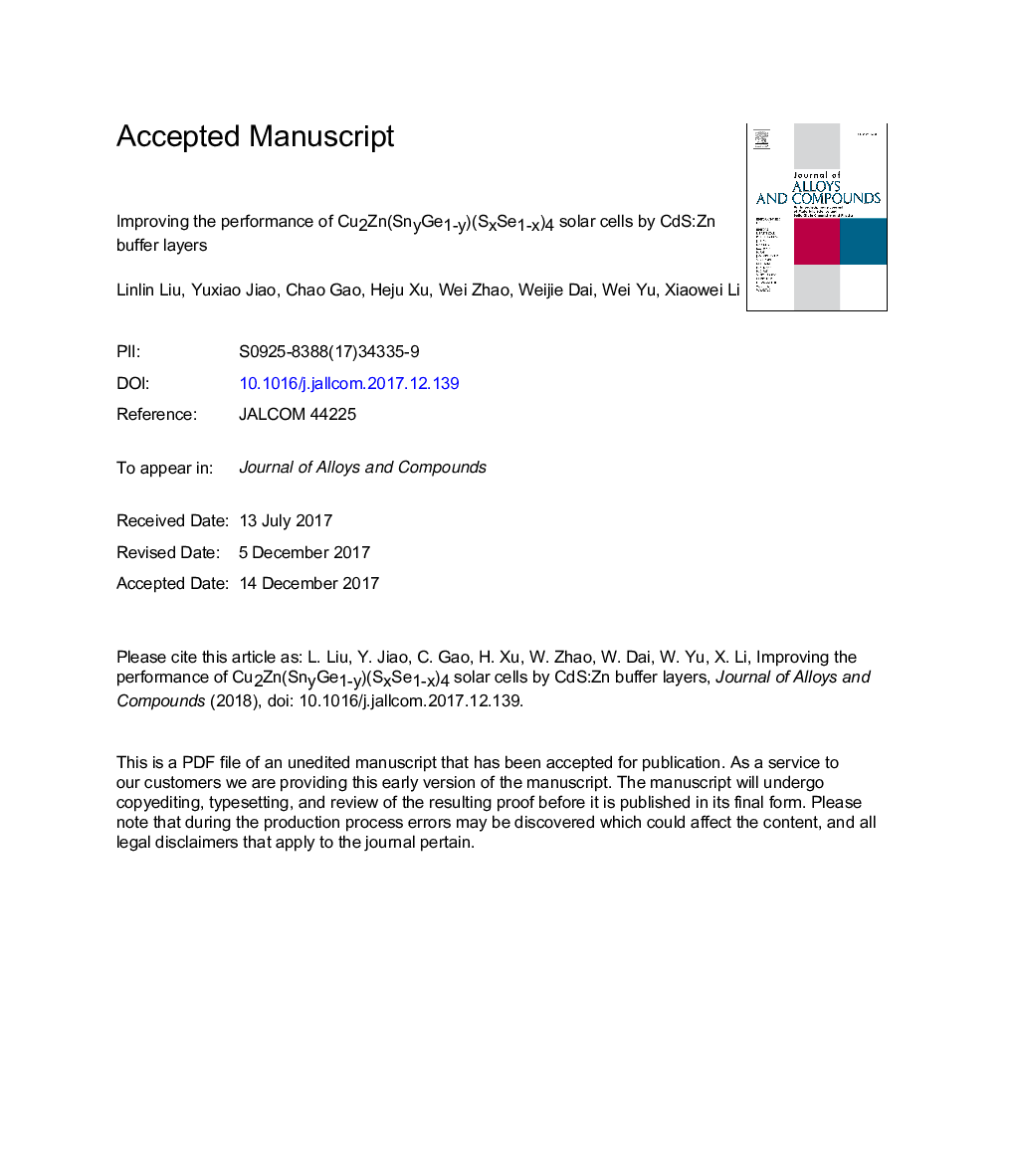| Article ID | Journal | Published Year | Pages | File Type |
|---|---|---|---|---|
| 7993991 | Journal of Alloys and Compounds | 2018 | 11 Pages |
Abstract
Cu2Zn(SnyGe1-y)(SxSe1-x)4 (CZTGSSe) films were prepared based on a single target sputtering method, then CZTGSSe solar cells were fabricated using CdS:Zn buffer layers which were deposited by adding zinc acetate into the deposition solutions of CdS. For comparison, CZTGSSe solar cells were also fabricated using CdS buffer layers without adding zinc acetate. It is found the CZTGSSe solar cells with CdS:Zn buffer layers perform better than the solar cells with CdS buffer layers. The results reveal that little amount of zinc is incorporated into the buffer layer when zinc acetate is added into the solution. The microstructure and therefore the properties (e.g. Eu energy) are modified by the zinc adding. The solar cells with CdS:Zn buffer layers show alleviated cross-over behavior in J-V measurement, probably because less traps exist in the CdS:Zn buffer layers. The C-V measurement proves that the carrier concentration of the absorber in the solar cell with CdS:Zn buffer layer is slightly lower, and the solar cells with CdS:Zn buffer layers have larger collection depth. These results indicate that the addition of zinc acetate in the deposition solution can not only changes the properties of the buffer layers, but also changes the properties of the absorber layer and the solar cell. The experiment results prove that the CdS:Zn buffer layer would be useful for improving the performances of CZTGSSe solar cells.
Keywords
Related Topics
Physical Sciences and Engineering
Materials Science
Metals and Alloys
Authors
Linlin Liu, Yuxiao Jiao, Chao Gao, Heju Xu, Wei Zhao, Weijie Dai, Wei Yu, Xiaowei Li,
